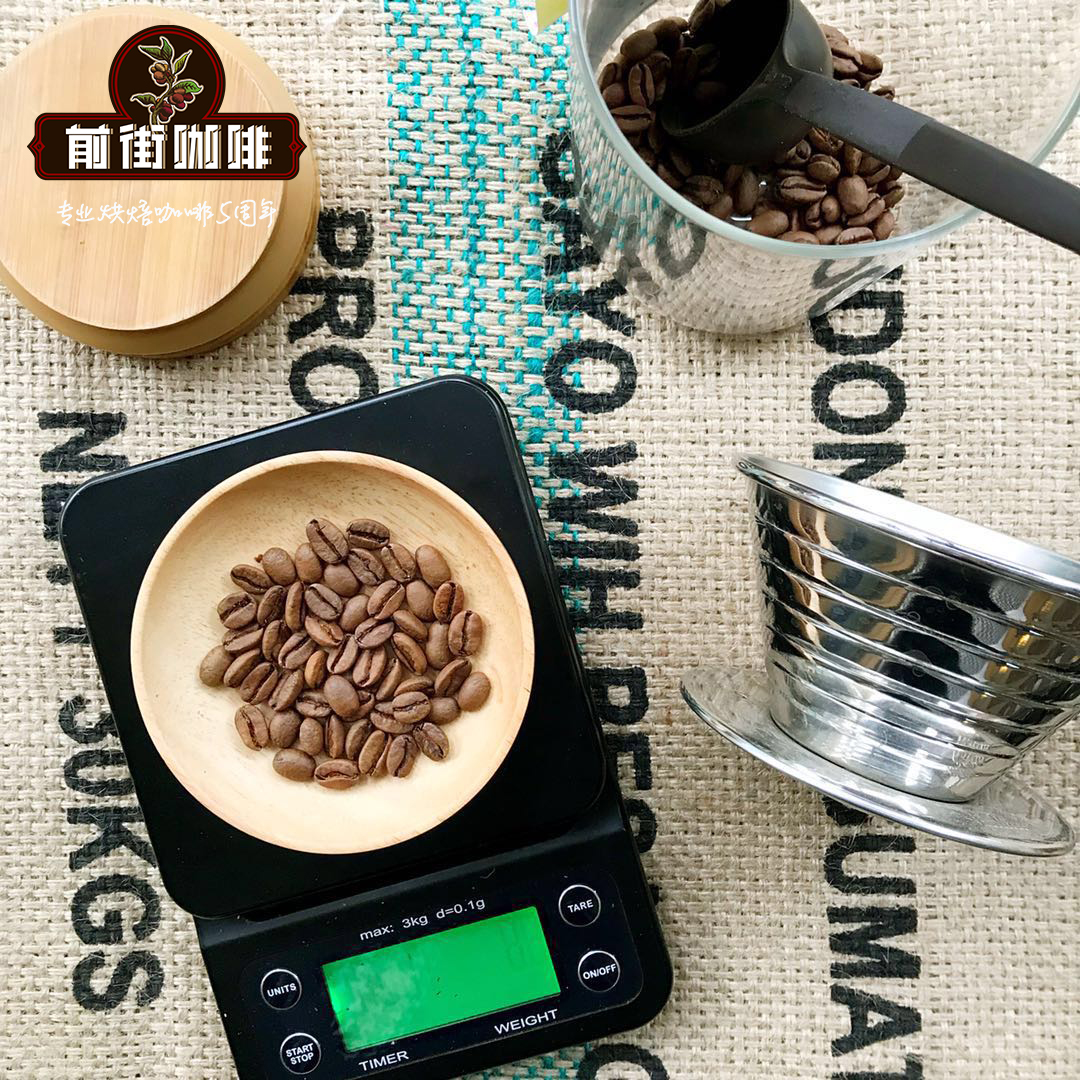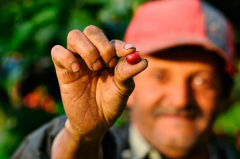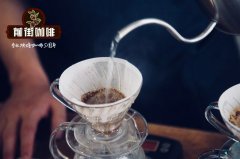Kenya AB Komatina Coffee Bean Information hand-flushed Kenya Cranberry Cooking parameters

Professional coffee knowledge exchange more coffee bean information please follow the coffee workshop (Wechat official account cafe_style)
Kenya Komatina cranberry washing
Production area: Mathira Guchuko
Bean seed: Arabica SL28 SL34
Plant 1830-1920 meters above sea level
Planting soil red volcanic soil
Rainfall: about 1200MM
Cup test score 86.5
Flavor description:
Cranberries, caramel, cocoa,
Red apple, medium alcohol thickness
When hearing "Kenyan coffee", the first thing that comes to mind for many coffee lovers is "Kenyan AA".
Because coffee beans are the most widely used in coffee shops, and people who know a little about coffee beans know that they represent the level of quality.
But is Kenyan AA coffee really better than AB coffee?
The method of grading beans varies slightly from place to place.
For example, Brazil, the world's largest coffee producer, is labeled No.2--No.6 according to the number of defective beans (defect beans) per 300g of raw beans and SHB--EPW according to the height of cultivation in Guatemala.
Kenya marks raw beans as E--MH according to their size. At this point, the benchmark raw bean size refers to the "sieve size (screen size)" (1 screen size=1/64 inch (0.4 mm)).
Kenya uses sieve size as the standard, combining density and shape to classify coffee. As in Brazil or Guatemala, coffee is classified not by the number of defective beans or planting height, but by the size of the sieve.
The reason for this is that the bigger the beans, the higher the content of oil that affects the flavor of coffee.
Kenyan coffee is rated as E-PB-AA-AB-C-TT-T-MH/ML.
Kenya E
The screen size is more than 18, which is called "Elephant Bean". Two face-to-face two seeds merged into one, suddenly mutated beans.
Kenya PB
It is also included in Kenya E, which means "Peaberry". In cherry fruits, there are not two seeds, but beans formed by a round seed.
Kenya AA
The size of the sieve is 17mur18pm 1400Muth2000m highland, which is the largest size of normal raw beans. It has an excellent medium mellow, crisp and refreshing taste.
Kenya AB
The size of the screen is a mixture of grade A (screen size 16murmur17) and grade B (sieve size 15murmur16). Although it is not considered to be like the high-priced coffee of Kenya AA, it is also rated as premium grade coffee.
Kenya C
The screen size is 14m / m / m / 15, which is lower than that of grade B.
Kenya TT
The size of the sieve is 15 Mel 17, the size of beans is similar to that of AA--AB, but the density is low.
Kenya T
Sieve size less than 12, broken, defective or small beans, fragments of grade C.
Kenya MH/ML
Before harvest, beans that fall by themselves are processed because they are overcooked. Among them, the heavy ones are MH grade (MassHeavy) and the light ones are ML grade (Mass Light). Because of the low quality, most of them are traded at a low price.
In addition to the above levels, there are HE level (HeavyEars), UG level (UnGraded), SB level (SortedBeans).
In terms of the order of levels, AA is higher than AB, but AB is only slightly smaller than AA in size, and its quality is no less than AA.
Maybe it's because Kenya's AA is now widely believed to be the best coffee grade. As a result, it is natural to form the perception that Kenyan AB is considered to be of low quality.
In the Kenyan coffee grade classification standard, there is no quality evaluation factor such as the taste or the quantity of defective beans.
Because a high grade does not fully represent good quality, it is not easy to conclude that the quality of Kenya AA is better than Kenya AB.
For the above reasons, companies that export coffee to Kenya will reclassify and classify them according to their own systems: taking the SB-Plus-FAQ plus-FAQ-FAQ minus-Minus; as an example, they are divided into SB-Plus-FAQ plus-FAQ-FAQ minus-Kenya MH/ML, Grinder plus-Bold grinder-Kenya, and Kenya MH/ML-Unclean cup.
Like this, it is difficult to judge the quality of Kenyan coffee simply by the levels of AA and AB.
Is it because you are "tied up" by the name "Kenya AA" that you can't enjoy more Kenyan coffee?
If you are looking for high-quality Kenyan coffee, please don't be obsessed with grades such as AA or AB, and taste the coffee directly.
Important Notice :
前街咖啡 FrontStreet Coffee has moved to new addredd:
FrontStreet Coffee Address: 315,Donghua East Road,GuangZhou
Tel:020 38364473
- Prev

The new species derived from the cross between elephant beans and different varieties emit a completely different charm from the past.
Professional coffee knowledge exchange more coffee bean information please follow the coffee workshop (Wechat official account cafe_style) Nicaraguan coffee has been forgotten in Taiwan in recent years. Nicaraguan coffee is rarely seen. In fact, the growing conditions in Nicaragua are not inferior to those in Central American countries. The coffee produced is characterized by a refreshing and balanced taste, and what is amazing is the coffee produced by small farmers.
- Next

Flavor and taste characteristics of Starbucks Nicaraguan coffee beans, Nicaraguan Storm Manor coffee flavor
For more information on coffee beans, please follow the coffee workshop (Wechat official account cafe_style) Nicaragua is known as the "country of mountains and lakes". Coffee is mainly produced in the north-central mountains, with tropical forests and fern, orchid and lichen composition, colorful vegetation. The history of Nepal is full of conquest, resistance, war, dictatorship and corruption.
Related
- Detailed explanation of Jadeite planting Land in Panamanian Jadeite Manor introduction to the grading system of Jadeite competitive bidding, Red bid, Green bid and Rose Summer
- Story of Coffee planting in Brenka region of Costa Rica Stonehenge Manor anaerobic heavy honey treatment of flavor mouth
- What's on the barrel of Blue Mountain Coffee beans?
- Can American coffee also pull flowers? How to use hot American style to pull out a good-looking pattern?
- Can you make a cold extract with coffee beans? What is the right proportion for cold-extracted coffee formula?
- Indonesian PWN Gold Mandrine Coffee Origin Features Flavor How to Chong? Mandolin coffee is American.
- A brief introduction to the flavor characteristics of Brazilian yellow bourbon coffee beans
- What is the effect of different water quality on the flavor of cold-extracted coffee? What kind of water is best for brewing coffee?
- Why do you think of Rose Summer whenever you mention Panamanian coffee?
- Introduction to the characteristics of authentic blue mountain coffee bean producing areas? What is the CIB Coffee Authority in Jamaica?

